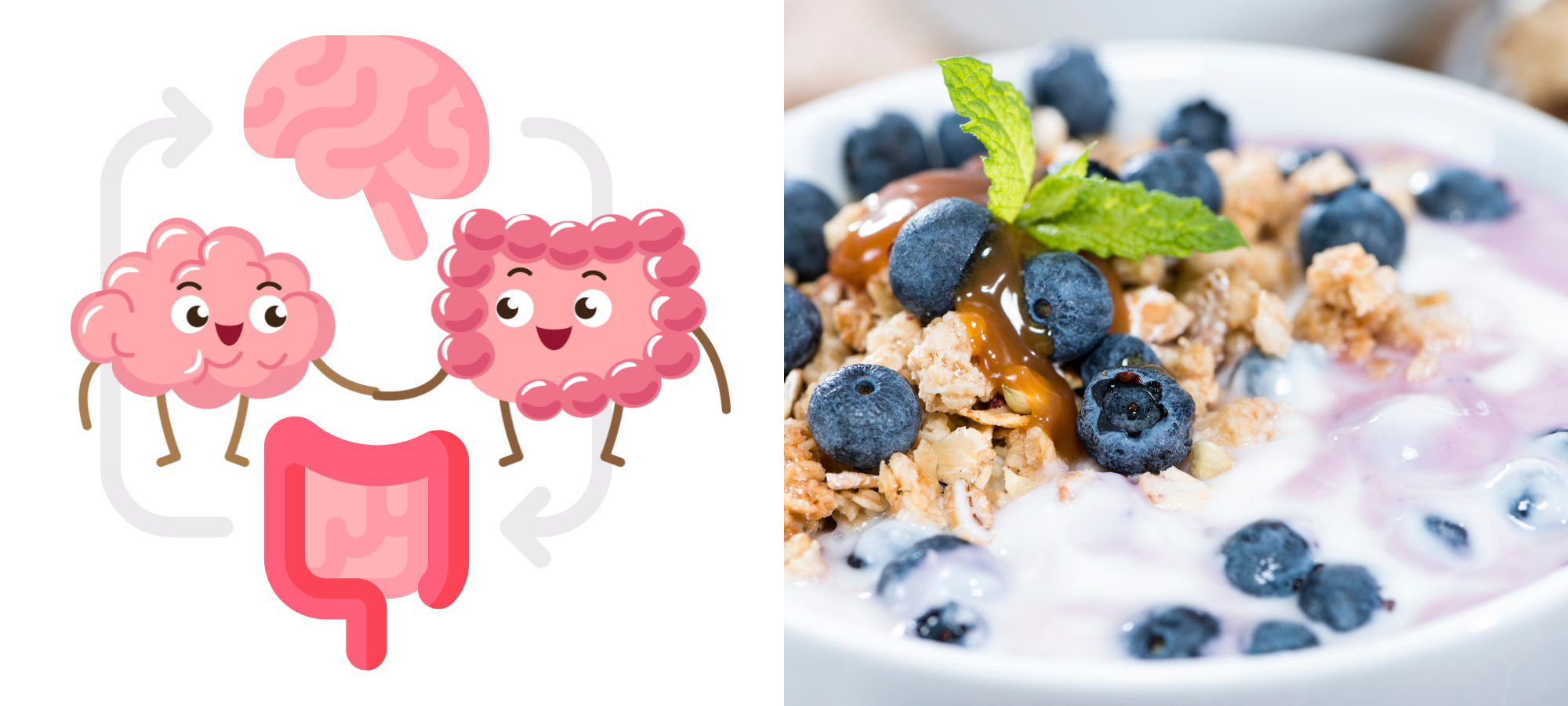Updated on August 31, 2025

Recipe: Make L. brevis, L. rhamnosus, B. subtilis, and B. clausii yogurt yourself
Also suitable for people with lactose intolerance (see notes below).
Ingredients (for approx. 1 liter of yogurt)
-
2 capsules L. brevis (each 2 billion KBE)
-
2 capsules L. rhamnosus (each 10 billion KBE)
-
2 capsules B. subtilis (each 3 billion KBE)
-
2 capsules B. clausii (each 4 billion KBE)
-
1 tbsp inulin (alternatively: GOS or XOS for fructose intolerance)
-
1 liter (organic) whole milk, 3.8% fat, ultra-high temperature treated and homogenized or H-milk
(The higher the fat content of the milk, the thicker the yogurt)
Note:
- 1 capsule L. reuteri, at least 5 × 10⁹ (5 billion) CFU (en)/KBE (de)
- CFU stands for colony forming units – in German, kolonie-bildende Einheiten (KBE). This unit indicates how many viable microorganisms are contained in a preparation.
Notes on milk choice and temperature
- Do not use fresh milk. It is not stable enough for the long fermentation times and is not sterile.
- Ideal is H-milk (long-life, ultra-high temperature milk): It is sterile and can be used directly.
- The milk should be at room temperature. Alternatively, gently warm in a water bath to 38 °C (100 °F). Please avoid higher temperatures: From about 44 °C, the probiotic cultures are damaged or destroyed.
Preparation
-
Open all 8 capsules and put the powder into a small bowl.
-
Add 1 tbsp inulin per liter of milk, which serves as a prebiotic and promotes bacterial growth. For people with fructose intolerance, GOS or XOS are suitable alternatives.
-
Put 2 tbsp milk into the bowl and stir everything thoroughly until no lumps remain.
-
Stir in the remaining milk and mix well.
-
Pour the mixture into a fermentation-suitable container (e.g., glass).
-
Place in the yogurt maker and let ferment at 38 °C (100 °F) for 36 hours.
Subsequent batches
From the second batch onward, use 2 tbsp yogurt from the previous batch as a starter. This also applies if the first yogurt is still thin or not perfectly set. Important: only use if it smells fresh, tastes mildly sour, and shows no signs of spoilage (no mold, no unusual discoloration, no sharp odor).
Ingredients per 1 liter of milk (subsequent batch):
-
2 tbsp yogurt from the previous batch
-
1 tbsp inulin
-
1 liter UHT milk or ultra-high temperature treated, homogenized whole milk
Here’s how:
-
Put 2 tbsp yogurt from the previous batch into a small bowl.
-
Add 1 tbsp inulin and 2 tbsp milk, stir until smooth with no lumps.
-
Stir in the remaining milk and mix well.
-
Pour the mixture into a glass and place it in the yogurt maker.
-
Let ferment at 38 °C (100 °F) for 36 hours.
Important note
-
Inulin is the food for the cultures – add 1 tbsp per liter of milk for each batch.
If you have questions, we are happy to assist you via email team@tramunquiero.com
or via our contact form.
Why 36 hours?
The choice of this fermentation duration is scientifically justified: L. brevis and L. rhamnosus have a doubling time of about 2–3 hours, B. subtilis and B. clausii as spore-forming bacteria are particularly robust and can also multiply within a few hours. In 36 hours, numerous doubling cycles occur, enabling a high concentration of probiotic active germs in the finished product. Through the longer maturation, the lactic acids also stabilize, and the cultures become particularly resilient.
!Important to note!
The first batch often does not succeed for many users. However, it should not be discarded. Instead, it is recommended to start a new batch with two tablespoons of the first batch. If this also fails, please check the temperature of your yogurt maker. For devices where the temperature can be set precisely to the degree, the first batch usually succeeds well.
Tips for perfect results
- The first batch is usually still a bit more liquid or grainy. Use 2 tablespoons of the previous batch as a starter for the next round – with each new batch, the consistency improves.
- More fat = thicker consistency: The higher the fat content of the milk, the creamier the yogurt becomes.
- The finished yogurt is shelf-stable in the refrigerator for up to 9 days.
Consumption recommendation:
Enjoy about half a cup (approx. 125 ml) of the yogurt daily – preferably regularly, ideally at breakfast or as a snack in between. This allows the contained microbes to develop optimally and sustainably support your microbiome.
Restart after 20 fermentations
How many times can you reuse a yogurt starter before you need a fresh starter culture? Dr. William Davis recommends in his book Super Gut (2022) not to reproduce a fermented Reuteri yogurt for more than 20 generations (or batches) continuously. But is this number scientifically justified? And why exactly 20, not 10, not 50?
What happens during re-culturing?
Once you have made yogurt, you can use it as a starter for the next batch. This transfers live bacteria from the finished product into a new nutrient solution (e.g., milk or plant-based alternatives). This is ecological, saves capsules, and is often done in practice.
However, repeated re-culturing leads to a biological problem:
Microbial drift.
Microbial drift – how cultures change
With each transfer, the composition and properties of a bacterial culture can gradually change. Reasons for this include:
- Spontaneous mutations during cell division (especially with high turnover in warm environments)
- Selection of certain subpopulations (e.g., faster growers displace slower ones)
- Contamination by unwanted microbes from the environment (e.g., airborne germs, kitchen microflora)
- Nutrient-related adaptations (bacteria "acclimate" to certain milk species and change their metabolism)
The result: After several generations, it is no longer guaranteed that the same bacterial species, or at least the same physiologically active variant, is present in the yogurt as at the beginning.
Why Dr. Davis recommends 20 generations
Dr. William Davis originally developed the yogurt method for his readers to specifically harness certain health benefits (e.g., oxytocin release, better sleep, skin improvement). In this context, he writes that an approach "works reliably for about 20 generations" before a new starter culture from a capsule should be used (Davis, 2022).
This is not based on systematic lab tests but on practical experience with fermentation and reports from his community.
"After about 20 generations of re-use, your yogurt may lose potency or fail to ferment reliably. At that point, use a fresh capsule again as starter."
— Super Gut, Dr. William Davis, 2022
He justifies the number pragmatically: After about 20 times of re-culturing, the risk increases that undesirable changes become noticeable, such as thinner consistency, altered aroma, or reduced health effects.
Are there scientific studies on this?
There are no specific scientific studies on yogurt over 20 fermentation cycles so far. However, there is research on the stability of lactic acid bacteria over multiple passages:
- In food microbiology, it is generally accepted that genetic changes can occur after 5–30 generations, depending on species, temperature, medium, and hygiene (Giraffa et al., 2008).
- Fermentation studies with Lactobacillus delbrueckii and Streptococcus thermophilus show that after about 10–25 generations, a change in fermentation performance (e.g., lower acidity, altered aroma) can occur (O’Sullivan et al., 2002).
- For Lactobacillus reuteri specifically, it is known that its probiotic properties can vary greatly depending on subtype, isolate, and environmental conditions (Walter et al., 2011).
These data suggest: 20 generations is a conservative, sensible guideline to preserve the integrity of the culture – especially if you want to maintain the health effects (e.g., oxytocin production).
Conclusion: 20 generations as a practical compromise
Whether 20 is the "magic number" cannot be scientifically determined exactly. But:
- Discarding fewer than 10 batches would usually be unnecessary.
- Drawing more than 30 batches increases the risk of mutations or contamination.
- 20 batches correspond to about 5–10 months of use (depending on consumption), a good period for a fresh start.
Recommendation for practice
After a maximum of 20 yogurt batches, a new approach with fresh starter culture from capsules should be used, especially if you want to specifically use the yogurt for your microbiome.
Daily benefit
Lactobacillus brevis
-
Neurotransmitter production: Produces γ-aminobutyric acid (GABA), an important calming neurotransmitter associated with stress reduction and better sleep (Barrett et al. 2012).
-
Gut health: Inhibits the growth of pathogenic germs and promotes a balanced microbiome (Urbanska et al. 2009).
-
Immunomodulation: Supports the regulation of inflammatory responses in the gut (Kim et al. 2019).
-
Fermentation: Traditionally found in fermented foods like sauerkraut or kimchi, where it significantly contributes to the aroma.
Lactobacillus rhamnosus
-
All-rounder in the microbiome: One of the best-studied probiotic strains with versatile positive effects (Segers & Lebeer 2014).
-
Gut health: Effective against diarrhea, irritable bowel symptoms, and antibiotic-associated complaints (Guandalini 2011).
-
Immune strengthening: Reduces the risk of respiratory infections and strengthens mucosal defense (Hatakka et al. 2001).
-
Psychobiotic: Shows anxiolytic and mood-enhancing effects in animal and human studies by influencing GABA metabolism in the brain (Bravo et al. 2011).
Bacillus subtilis
-
Spore former: Resists stomach acid and bile, reliably reaches the intestine (Hong et al. 2005).
-
Immune system: Stimulates the production of antimicrobial substances and supports the defense against pathogens.
-
Intestinal barrier: Promotes mucosal integrity and reduces the risk of "Leaky Gut" (Elshaghabee et al. 2017).
-
Digestion: Produces enzymes like amylases and proteases that facilitate the breakdown of carbohydrates and proteins.
-
Traditional use: Part of fermented soy products ("Natto") in Japan for centuries, considered a safe probiotic type.
Bacillus clausii
-
Spore former: Extremely resistant to heat, stomach acid, and antibiotics, therefore very reliable in colonization (Hoa et al. 2000).
-
Antibiotic adjunct therapy: Clinically tested for prevention and treatment of antibiotic-associated diarrhea (Mete et al. 2019).
-
Immunomodulation: Promotes immune system balance, reduces allergic reactions and chronic inflammation (Negroni et al. 2014).
-
Safety: Has been used in medicine for decades and is considered safe, even for children.
Sources
-
Barrett E. et al. (2012). Appl Environ Microbiol.
-
Urbanska AM. et al. (2009). Benef Microbes.
-
Kim JY. et al. (2019). J Microbiol Biotechnol.
-
Segers ME, Lebeer S. (2014). Microb Cell Fact.
-
Guandalini S. (2011). J Clin Gastroenterol.
-
Hatakka K. et al. (2001). BMJ.
-
Bravo JA. et al. (2011). PNAS.
-
Hong HA. et al. (2005). Trends Microbiol.
-
Elshaghabee FMF. et al. (2017). Front Microbiol.
-
Hoa NT. et al. (2000). Appl Environ Microbiol.
-
Mete R. et al. (2019). Eur Rev Med Pharmacol Sci.
-
Negroni A. et al. (2014). J Transl Med.



0 comments